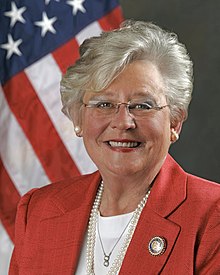Navigating to Safe Waters in Political PR
Published on February 18, 2019, at 9:25 a.m.
by Cassidy Anderson.
In the era of a 24-hour news cycle and growing civic tensions within the United States, navigating the treacherous waters of political public relations is tricky. The key to surviving this realm of PR, however, remains the same as other industry sectors: transparency.

Political PR has many facets and levels to it and is difficult to determine a singular definition according to Dr. Tammy Vigil. It can range all the way from the presidency to a hometown representative, as well as include messages from social politics and lobbyists. “Those entities are trying to communicate effectively with various kinds of publics at various stages of time, and how they do that and their effectiveness really depends on their skill sets, how well they understand their audience, and what their overall goals are with those audiences,” said Dr. Vigil.
In terms of governmental politics, Alabama Gov. Kay Ivey said her audiences consist of any and every person living within the state, so she communicates using many different communication tools. Through the work of her communication staff, whom she meets with daily, Gov. Ivey constantly has information flowing to citizens.

“I communicate with the public and the media in a variety of ways — from speaking directly to constituents at public events, to sending email blasts, to posting on my website and social media to inform the public and media professionals about my daily activities. All are effective and are used in combination with one another,” said Gov. Ivey.
A foundation for political communication
Throughout the history of American politics, one form of communication remains consistent: the speech. Today, social media looms in the back of one’s mind when thinking about communication in any form, but speeches are the chance for a figure to make his or her case to the public at large, according to Dr. Vigil.
“Things like an inaugural address, a state of the union, or the speeches at a convention like acceptance addresses at nominating conventions … I think all of those are important moments that give you the opportunity, as either the candidate or someone working on the campaign, to put out a message that, then will sprinkle out into lots of different places,” said Dr. Vigil.
A speech from a public figure, such as a governor, can then earn news coverage on behalf of that person. It can also be used to fuel a substantial amount of further messaging, according to Dr. Vigil, which includes social media.
Gov. Ivey, among others, is an example of a political figure adopting new forms of communication as tools to distribute meaningful information from a speech efficiently through outlets such as Twitter and Facebook. She noted it as an asset to her administration’s work toward broadening the scope of how the public is kept up to date with the governor’s office.
Different strategies for communication
Though the common perception of PR professionals exists because of actor portrayals on TV shows and movies, the role of a political PR practitioner is to help communicate effectively as well as combat any negative media coverage.
“Effective communication is essential to any public service office,” said Gov. Ivey. “I serve the people of Alabama first and foremost and am working to ensure our state continues moving forward. Therefore, my No. 1 rule [of political communication] is to never lose sight of who you serve and to always be open and honest with them. Keeping this in mind, I make it a point to be in constant communication with the people who make up this state whether it’s a teacher, farmer, business owner or a reporter.”
Ivey’s strategy is consistent with the traditional strategy for political communication, but in today’s national political climate, controversy is emerging as a strategy. Dr. Vigil suggests that the success of always being in the public eye for outrageous events began during the 2016 elections and has carried over into the current presidency.
Controversy fueling the way a politician communicates with the public goes against the grain of traditional strategies of political communication, and Dr. Vigil noted that it can often pose an ethical dilemma for PR professionals. The success of U.S. President Donald Trump’s campaign has set a murky precedent prompting clients to request using controversy to expand their reach.
“The difference between good and effective becomes a challenge to sometimes explain to folks who are trying to figure out these strategies and saying, ‘Oh yeah look at that! He’s getting attention and he’s won an election,’” said Dr. Vigil. “That’s part of the challenge when you see things that you know are unethical or immoral and yet people think they work so they want to use them. Then there’s the pressure. I think that is a challenge for public relations professionals.”
In addition, politics has historically had a “build me up, break them down” strategy that Dr. Vigil said has been around since the 1980s and before. “The best approach [to combat this strategy] is to highlight the commonalities their client has with the audience, making sure to move beyond superficial similarities and demonstrating shared values/perspectives/experiences,” she advised.
With today’s accessibility of politicians and growing tensions in the United States, the job of steering an administration or campaign through a sea of controversy and competition has become more pertinent for political PR professionals. The key is to stay true to oneself and who one is representing, and, arguably most importantly, to stay transparent.




